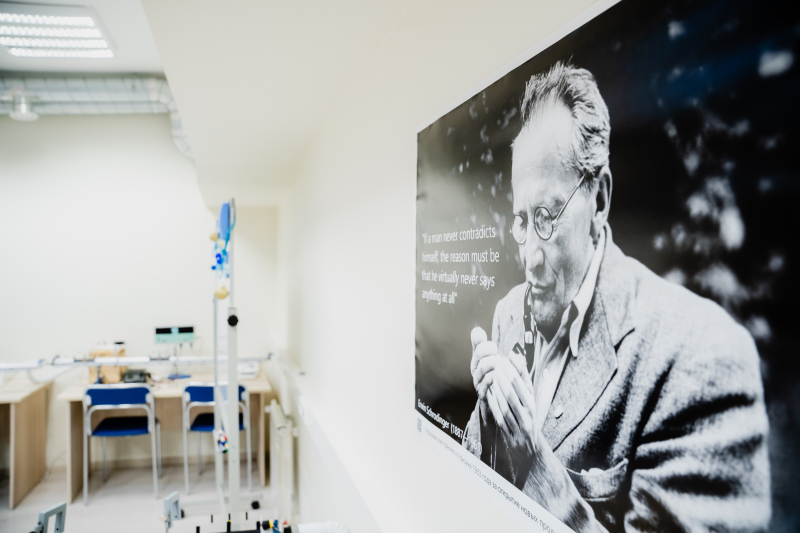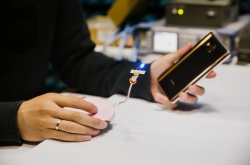Contents:
- Theoretical vs. experimental physicists
- A day in the life of a researcher
- Tools
- Research outcomes
- Scientific verification
- Why become a scientist
- What physicists do at ITMO
Theoretical vs. experimental physicists
Broadly speaking, physics describes the world as a whole: it looks into how it works and what laws it is governed by. The scholars in the 17th-19th centuries could only investigate those portions of the world that they could see with their own eyes – hence, there was no division into theorists and experimenters. Nevertheless, this became inevitable as scientific concepts and phenomena became more and more complex over time.
Nowadays, theoretical physicists almost solely work with mathematical concepts, which help them build and calculate plausible models that will then be tested by their colleagues.
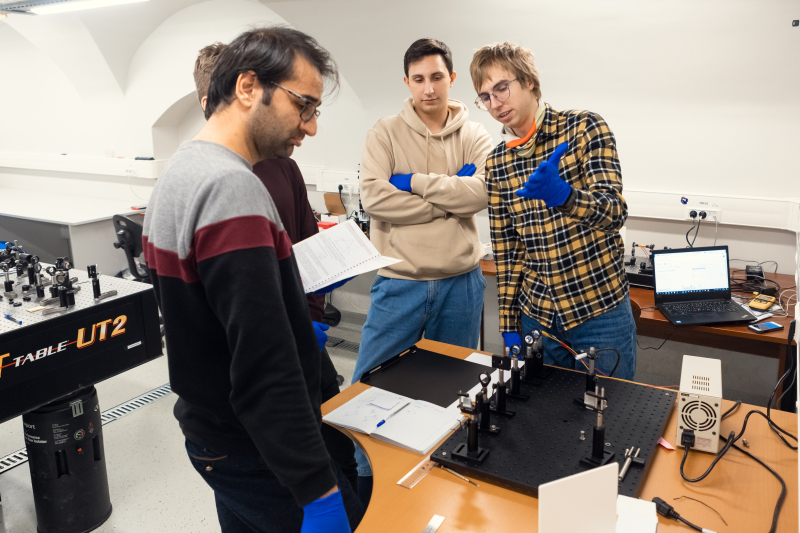
ITMO’s Faculty of Physics. Photo by Dmitry Grigoryev / ITMO.NEWS
A day in the life of a researcher
In addition to mathematical calculations and academic writing, theoretical physicists are also involved in other, less obvious, tasks, such as the constant monitoring of new papers and preprints in the field of their interest. This is their way to keep their finger on the pulse, consider and apply the findings of other researchers, as well as confirm if their idea is new or not.
Though often pictured as introverted, immersed in their own thoughts, in reality, researchers allocate a significant portion of their day to communicating, both online and offline, with their colleagues, co-authors, and students.
They also partake in conferences and symposiums, as well as occasionally deliver pop-sci lectures. Public presentations of their results are essential for modern-day researchers.
Besides, most scientists do not only research but also teach – and even supervise teams or entire laboratories.
Not to mention their routine tasks, such as writing grant applications and reports, managing laboratories and teams, and much more.
Read also:
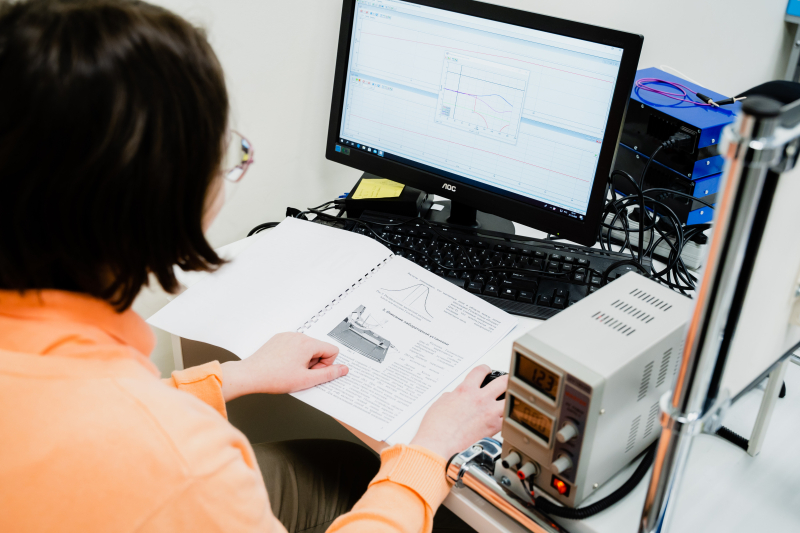
Credit: ITMO.NEWS
Researchers today need more than a pen and paper; they use Mathematica, Maple, and Mathcad for numerical and analytical calculations, LaTeX – for scientific papers, and Overleaf – for collaborative writing. When struggling to solve complex problems analytically, they typically turn to programming, namely Python and C++.
Research outcomes
The goal of any researcher is to produce new knowledge of physical phenomena or nature, which will be then captured and shared in papers, as well as reports at conferences and seminars. Later on, if still relevant, this study will make its way into books, monographs, textbooks, and curricula. Earlier, it could take around 50 years, whereas now the entire process accelerated to a record-low of 5-10 years.
Although focused on fundamental science, it is theoretical physicists who lay the groundwork for next-gen technologies and devices. For one, virtually all gadgets we have today came about through scientific studies on semiconductor materials, which were completed back in the 1940s.
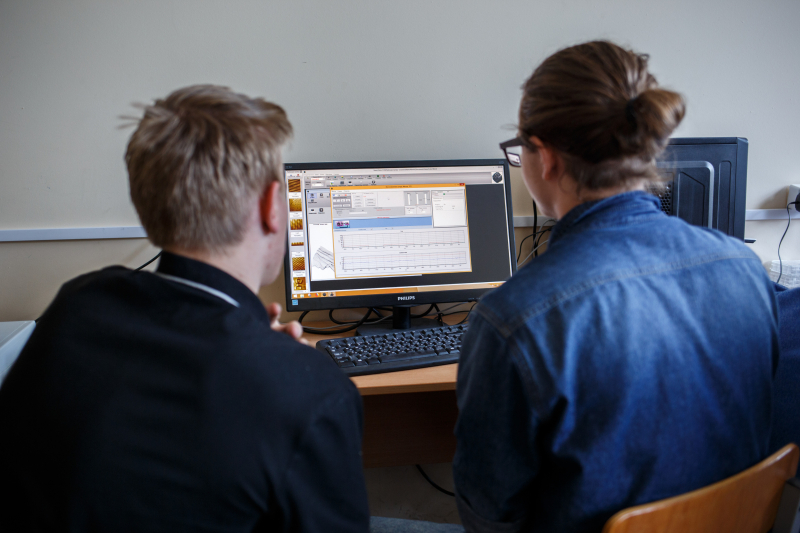
Credit: ITMO.NEWS
Scientific verification
The ultimate measure of data credibility is experimental proof. Yet it is not always possible to do that before publication, for instance, due to the lack of technical resources. Mathematical models, on the other hand, can not only describe original experimental facts but also predict associated physical effects.
In turn, a paper is considered valid and relevant if it is published in a peer-reviewed journal, meaning that its outcomes have been verified by the academic community. This proves that the project is innovative, relevant, and of interest to other researchers. The impact of research can also be measured with the h-index (a citations-based metric).
Read also:
Why become a scientist
Despite the alleged non-overlapping of natural sciences and humanities, theoretical physicists have much in common with creative professionals. While science may be governed by strict laws and its methods are algorithmic, it greatly relies on inspiration, dedication, and devotion, which come in the forms of reflection, brainstorming, predictions, and sudden insights.
Writing a research paper – again, despite all the formalities – is somehow similar to writing a book. Akin to writers or artists, scholars strive to convey their ideas in a way that is exciting and gripping for their readers. Hence, some scientists opt to follow the traditional literary structure when writing their papers: an exposition, a climax, and a denouement.
Read also:
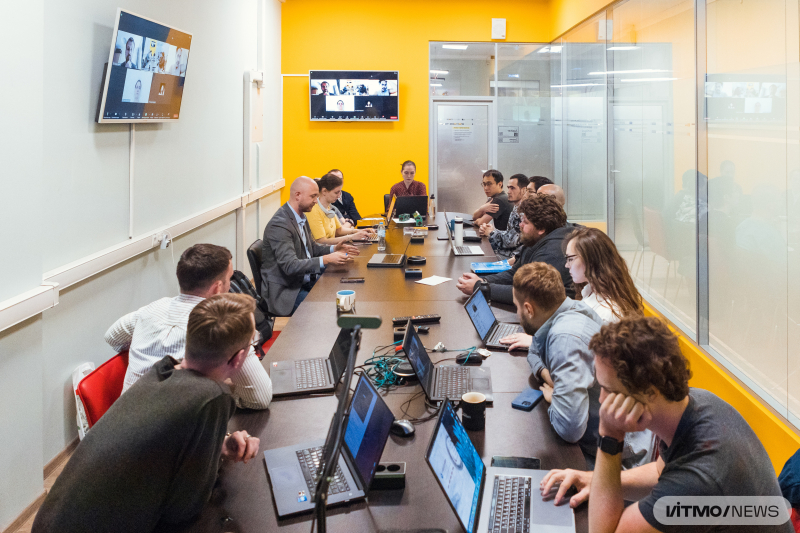
Andrey Bogdanov’s team in theoretical nanophotonics. Photo by Dmitry Grigoryev / ITMO.NEWS
What physicists do at ITMO
The Faculty of Physics of ITMO University pursues over 20 fields, including nanophotonics, quantum optics, optoelectronics, optomechanics, biophotonics, radiophysics, and novel materials. In 2022, the university established three frontier laboratories, namely the Laboratory “Probing Fundamental Physics with Topological Metamaterials”, the Laboratory “Functional Materials for Polaritonic Quantum Logic”, and the Laboratory “Solution-Processable Laser Diodes”.
The faculty has over 80 scientists with PhDs in physics and mathematics, including laureates of scientific awards and authors of breakthrough research publications in prestigious journals, like Science and Nature.
Read also:
PhD Studies at ITMO University’s Faculty of Physics and Engineering
The Faculty of Physics implements two Bachelor’s (Theoretical and Experimental Physics and Wireless Technologies) and three Master’s (Physics of Radio-Frequency Technologies, Advanced Quantum and Nanophotonic Systems, and Photonics and Spintronics) programs, as well as actively promotes its PhD studies (as of now, 100 PhD students study and work at the faculty).
Although the programs focus primarily on applied science, technical physics, and technology as a whole and do not separate theoretical and experimental research (hence – the Theoretical and Experimental Physics Bachelor’s program), fundamental training remains the core of the faculty. The majority of the faculty’s graduates pursue their careers in academia.
